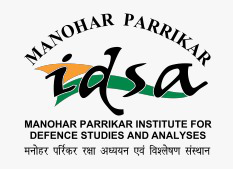Living Weapons: Biological Warfare and International Security by Gregory D. Koblentz
Cornell University Press, Ithaca and London, 2009, pp. 256, $35, ISBN 978-0-8014-4768-6
- Monalisa Joshi |
- March 2011 |
- Strategic Analysis
Home » Strategic Analysis
Cornell University Press, Ithaca and London, 2009, pp. 256, $35, ISBN 978-0-8014-4768-6
Penguin Viking, New Delhi, 2010, Rs. 799, ISBN 9780670083855
(ed.), HarperCollins, India 2010, Rs. 699, ISBN 978-81-72223-960-2
PublicAffairs, New York, 2010, pp. 213, ISBN 978-1-58648-916-8
(ed.), Penguin Viking, India, 2009, pp. 201, Rs. 450, ISBN 9780670083695
It is a little-known fact that Prime Minister Jawaharlal Nehru of India had proposed a ‘standstill agreement’ to prohibit the further testing of nuclear weapons as early as 1953. In effect, it was an initial step toward a comprehensive ban on the testing of nuclear weapons with the aim of their eventual elimination. That goal, of course, has proven to be quite elusive. Despite the conclusion of a Partial Test Ban Treaty in 1963, pursuing a comprehensive test ban remained a chimera as new nuclear powers entered the global arena and a spate of nuclear tests ensued.
There is an overwhelming sense of déjà vu in Kashmir today. This could have been deemed tiresome but for the grave implications it has for us as a nation, and as a people. We are now used to long cycles of violence interspersed by political ennui or tokenism and the ubiquitous ‘economic package’ which only serves to open up newer avenues for corruption in a state orphaned by history and politics for over six decades.
Insurgencies as well as popular unrests are generally rooted in political, social and economic deprivations, which in turn lead to the alienation and estrangement of a community. A popular sentiment seeking the empowerment of Muslim Kashmiris has been in existence for the past five centuries. History is replete with instances of the political deprivation and poverty of Kashmiri people during periods of their subjugation by the Mughals, the Pathans, the Sikhs and later the Dogras. Kashmiri alienation took firm roots during the Dogra rule (1846–1947).
The demand for autonomy in Jammu and Kashmir (J&K) followed by heated discourses on the subject has been appearing and fading intermittently. The demand as well as discourses, articulated by particular parties in the state, receives equal responses from political parties and analysts at the national level. In fact, the subject has acquired sharp political overtones over a period of time.
The spate of rioting which plagued Jammu and Kashmir (J&K) from June 2010 is testimony to the mismanagement of developments by both the state and central governments. This is all the more unfortunate as near normalcy had been established in Jammu and Kashmir following the November 2008 elections and the downtrend in insurgency through 2009 and early 2010.



